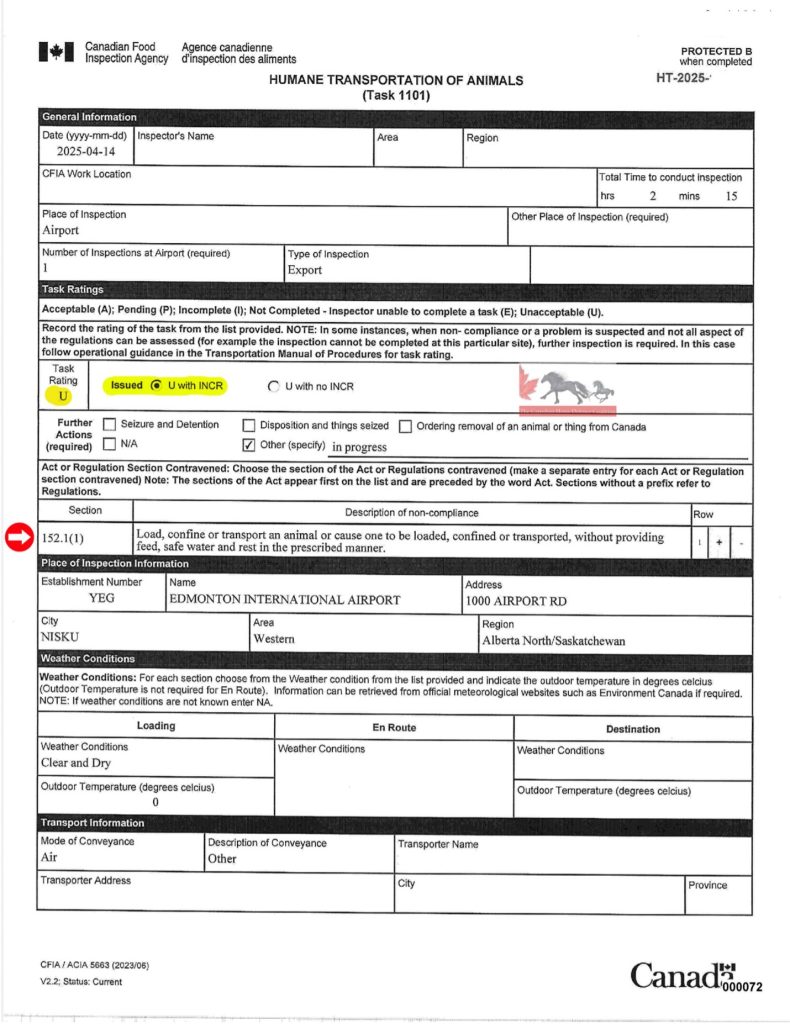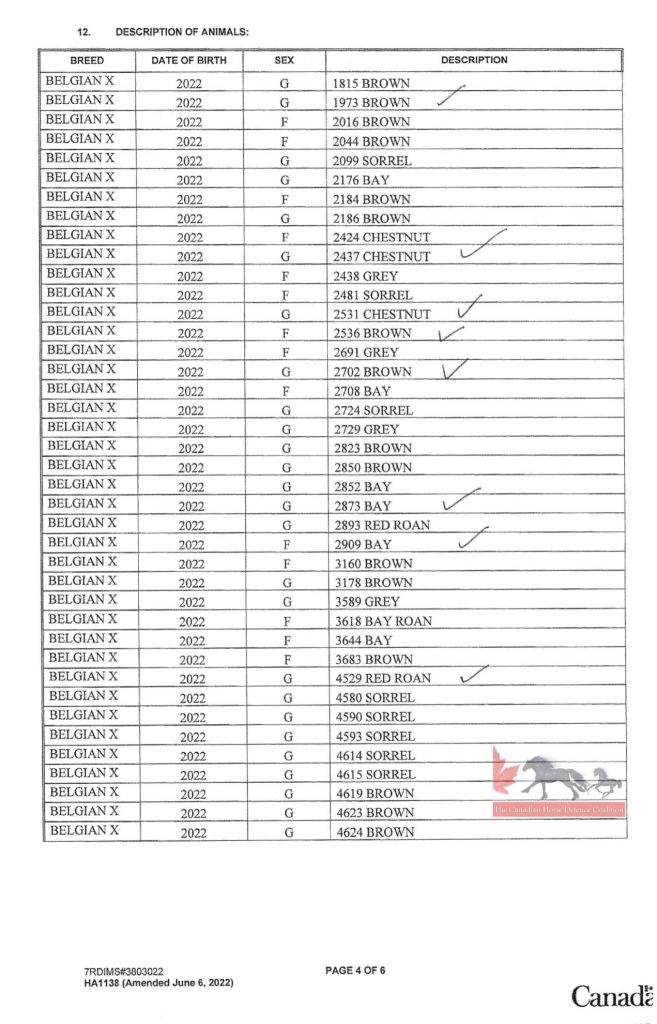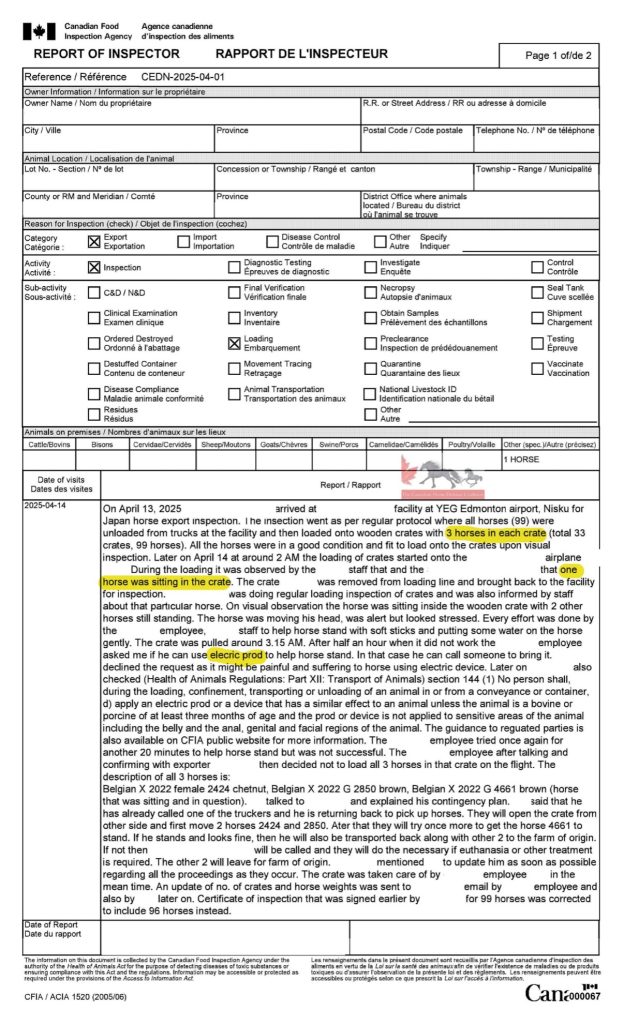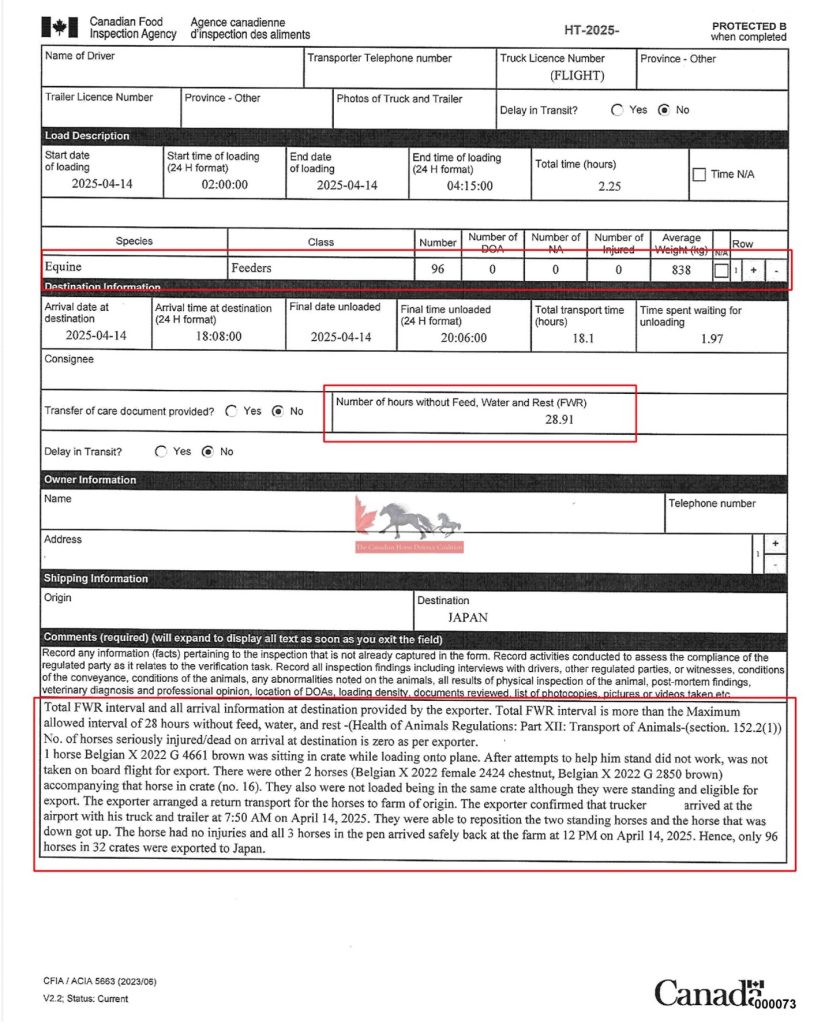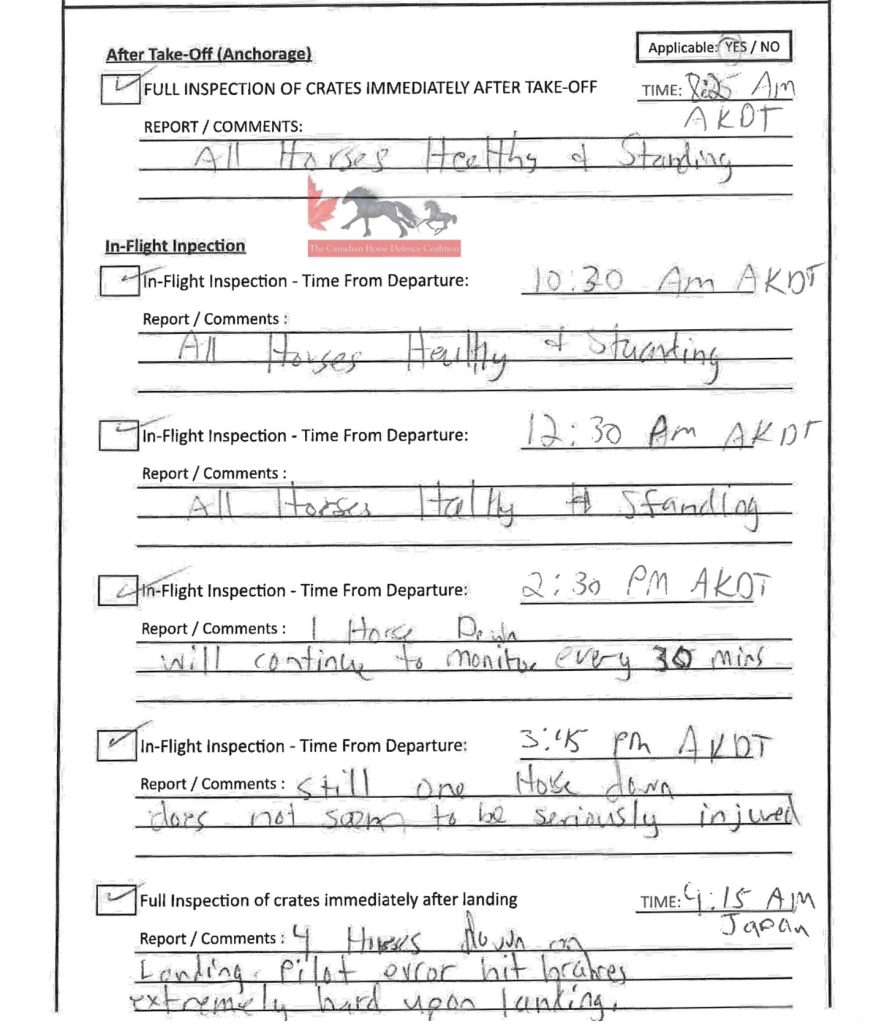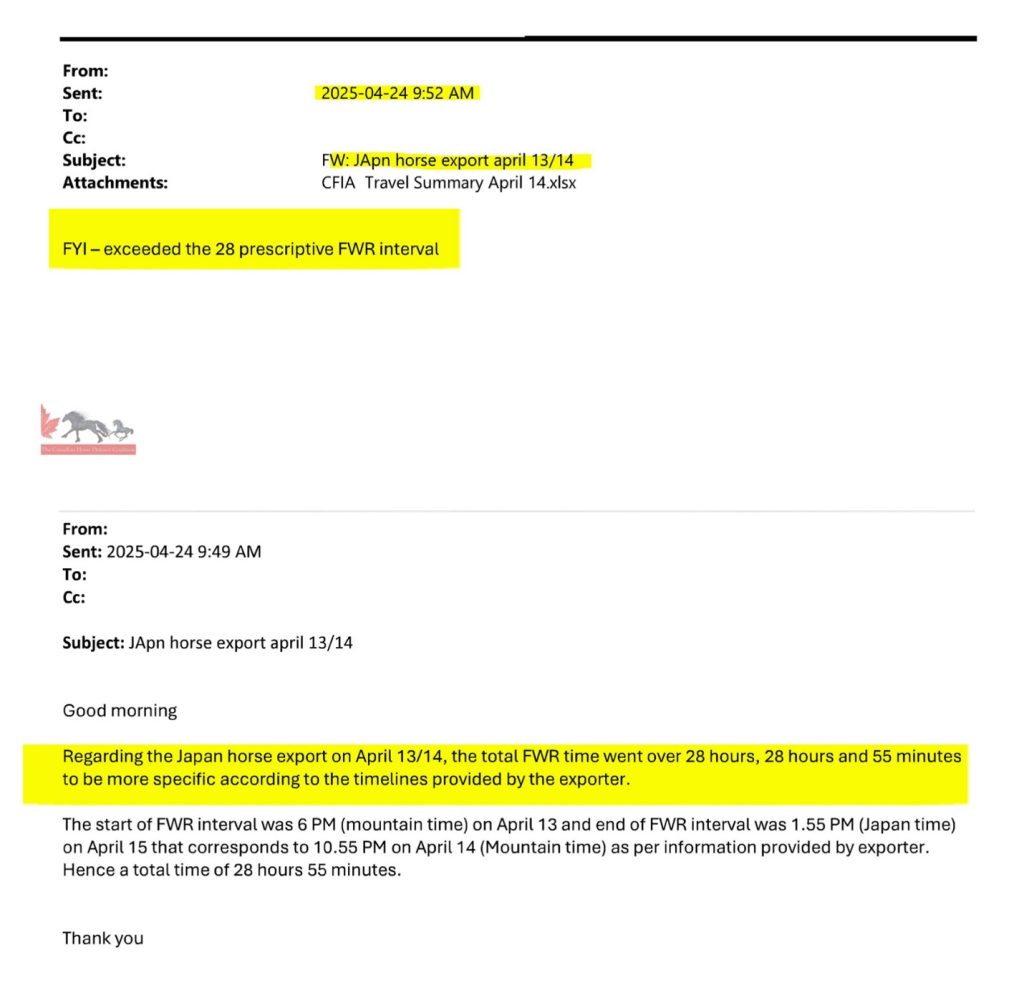Tove Reece photo
Timeline Regulations Violated Again; Distressed Horses Fall During Flight
July 2025
At approximately 5:26 a.m. on April 14, 2025, Korean Air Cargo flight number 9214 left the Edmonton International airport carrying 96 horses to the Kitakyushu airport in Japan. The plane’s departure was 1 hour and 26 minutes later than scheduled. Including a refuelling stop at the Ted Stevens International Airport in Alaska, the flight was 12 hours and 42 minutes in duration from takeoff to landing.
- Three horses were removed from the same crate prior to the flight due to one horse found sitting.
- One horse went down during the flight, between Alaska and Japan
- Four horses went down on landing when, according the attendant’s report, the pilot hit the brakes extremely hard when landing. Four horses were down on arrival in Japan.
- An email sent on April 15 stated there was no irregularity on arrival and horses were in good condition.
- The food, water, and rest interval exceeded the maximum of 28 hours allowed – 28.91 hours (28 hours and 55 minutes).
- A task rating of U *Unacceptable” was assigned on the Humane Transportation of Animals form and an INCR (Inspector non-compliance report) was issued, citing 152.1(1) as the section of the regulations contravened.
On Sunday, April 13, 2025 six trailers transported 99 horses from the feedlot to the airport– five with 18 horses each and one with 12 horses. All were Belgian crosses, born in 2022, and had an average weight of 836.68 kg (1845 lbs). This weight was revised to 838 kg (1847 lbs) following the removal of three horses from the shipment.
According to time sheets, the horses last had access to food, water, and rest at 6 pm that day.
The trucks left the feedlot at 7:10 pm and travelled approximately 3 hours, arriving at the Edmonton airport at approximately 10 p.m. The crate loading procedure lasted from 10:30 to 11:50 with the aircraft loading beginning at 2 a.m. and ending at 4:15 a.m. on Monday, April 14. Thirty-three crates were used with three horses loaded in each one.
Horse Found Sitting in Crate
During loading, staff observed one horse (#4661) sitting in the crate. The crate was removed from the loading line and returned to the facility for inspection. The gelding was moving his head and was alert but looked stressed. Staff attempted to make the horse stand using soft sticks and “putting some water on the horse gently”. When these attempts failed, the employee sought permission to use an electric prod to help horse stand and if allowed, he could call someone to bring it. The request was denied. When further attempts to get the horse to stand were unsuccessful, the employee and exporter discussed the situation and the decision was made to remove the horses in that crate from the flight.
At 7:50 a.m. a truck and trailer arrived to the airport to retrieve the horses in the crate that had been removed from the lineup. The two standing horses were repositioned in the crate and the down horse got up. The horses were returned to the farm of origin, arriving there at 12 p.m. on April 14.
Food, Water, and Rest
The food, water, and rest interval was recorded on the Humane Transportation of Animals form for this “shipment” to be 28.91 hours (28 hours and 55 minutes). Notes indicate the total food, water, and rest interval and all arrival times at destination were provided by the exporter.
Horses who are exported to Japan for slaughter are denied access to food, water, and rest from the time they leave the feedlot until their arrival at the quarantine station in Japan. This is another flight to add to the growing list of flights that exceeded the 28 hours maximum allowed under Canadian regulations.
This is not the first instance of horses found ‘’sitting’’ in crates or of horses going down on landing and takeoff. In fact, internal government documents describe how horses on these flights fall during takeoff and landing as they struggle to maintain their footing and balance.
In 2024, 3,265 horses were exported by air to Japan for slaughter. It comes as no surprise to learn that horses have been injured and died as a result of these flights!
To learn more about horse slaughter and the live horse shipments abroad for slaughter, please visit our website, blog, archived blog and follow us on Facebook, Twitter, Instagram, YouTube , Vimeo, andBluesky.
You can also write to us at info@defendhorsescanada.org
